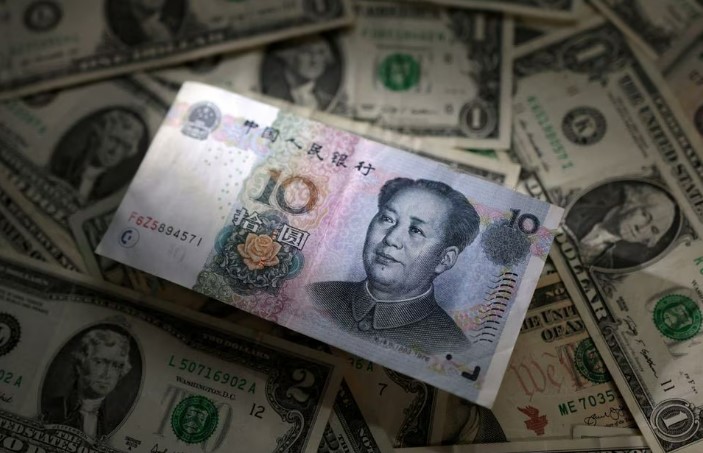Reports indicate that China’s major state-owned banks have been actively selling U.S. dollars to acquire yuan in both onshore and offshore spot foreign exchange markets this week. This move is an effort to mitigate the yuan’s depreciation.
While these banks engage in trading for their own purposes or to fulfill clients’ orders
they often act under the guidance of the central bank when the yuan is facing downward pressure
as is the case presently. A trader in Shanghai stated, “State bank dollar selling has become a new normal to slow the pace of yuan depreciation.”
Offshore branches
Sources with direct knowledge of the situation disclosed that offshore branches of these state banks also observed selling dollars during London and New York trading hours this week.
This strategy of dollar selling could help prevent excessive divergence between the offshore yuan and its onshore counterpart by curbing declines in the offshore market.
The yuan has experienced a depreciation of roughly 2.4% against the dollar since the beginning of this month
and a 6% decline since the start of the year. The onshore yuan was trading at 7.3145 per dollar as of 0442 GMT
while the offshore yuan was last recorded at 7.3400.
The recent acceleration
The recent acceleration in the yuan’s decline can attribute to the widening yield gap between China and the U.S., coupled with investors’ growing concerns
about China’s weak economic growth and heightened default risks in its property and shadow banking sectors.
The Chinese government’s gradual implementation of stimulus measures to boost growth has left investors disappointed. Meanwhile, the People’s Bank of China (PBOC) has taken steps to ease monetary policy in support of the economy, albeit at the cost of increasing pressure on the yuan.
This week, the yield differentials between China and the U.S. reached their widest point in 16 years
with investors speculating that the PBOC would further ease its policy following an unexpected rate cut this week. This potential policy action, though beneficial for the economy, could place additional pressure on the yuan.
In recent weeks, market observers have noticed attempts by Chinese authorities to slow down the yuan’s depreciation. The PBOC has consistently set a stronger-than-expected fixing, and state banks have repeatedly sold dollars.
PBOC directed major state
A similar approach was seen in September 2022 when the PBOC directed major state-owned banks to be prepared to sell dollars for yuan in offshore markets in an effort to stabilize the yuan’s value.
In July, the central bank made an adjustment to a parameter allowing companies to borrow more overseas, facilitating the conversion of foreign currency onshore to support the yuan. However, the higher interest rates associated with overseas loans remain a deterrent to borrowing abroad
limiting the effectiveness of this policy tweak.
One effective strategy appears to have been state banks reducing their yuan lending in the offshore Hong Kong market. This move contributed to containing the yuan’s decline this week by creating liquidity tightness in that market, according to traders.
On Wednesday, Hong Kong’s overnight yuan borrowing costs surged to their highest level since April 2022
as the CNH Hong Kong Interbank Offered Rate benchmark (CNH HIBOR) increased across the board.
Notably, the liquidity tightening was not overly severe
as aggressively draining yuan liquidity from that market could negatively impact sentiment in the bond market, noted a banker.








